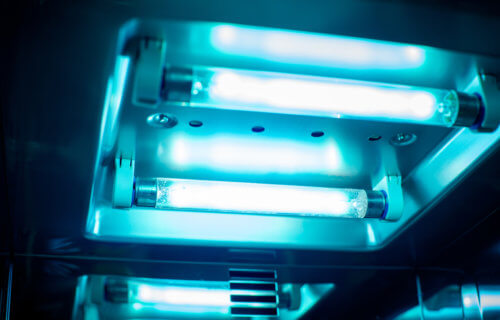NEW YORK — As the world looks to end the coronavirus pandemic, researchers have discovered a way to stop the illness’ spread in crowded areas. A Columbia University study shows that a particular type of ultraviolet light not only kills various forms of coronavirus, but it’s also safe to use around people. Far-UVC light can destroy airborne droplets carrying the virus, even with very low exposure, researchers say.
Dr. David Brenner says this unique form of UV light may be the key to disinfecting any space where people regularly gather. He notes the light will not penetrate skin nor damage human cells.
“Because it’s safe to use in occupied spaces like hospitals, buses, planes, trains, train stations, schools, restaurants, offices, theaters, gyms, and anywhere that people gather indoors, far-UVC light could be used in combination with other measures, like wearing face masks and washing hands, to limit the transmission of SARS-CoV-2 and other viruses,” Brenner says in a statement.
What is far-UVC light?
Although they work on the same light spectrum, far-UVC light has some key differences from regular UV rays. Far-UVC light has a shorter wavelength and more photon energy compared to standard UVC.
According to the study, published in Scientific Reports, regular UV light used to kill germs has a wavelength of 254 nanometers. While that’s great for killing the coronavirus, researchers say it “can be a health hazard to skin and eyes.”
Far-UVC’s wavelength ranges between 207 and 222 nm, which the study reveals “efficiently kills pathogens potentially without harm to exposed human tissues.” Researchers say far-UVC can’t break through the tear layer of the eye, nor penetrate the outer layer of dead cells on skin.
Tested against COVID-19
Two studies on far-UVC light are making the case to use it against all types of airborne viruses.
The first study used a misting device to spray two common coronaviruses into the air. After exposing the contaminated air to far-UVC, nearly all of the virus particles were killed. Even when using the regulated safe limit of UV light on the air droplets, researchers killed 90 percent of the viruses in just eight minutes. In 25 minutes, 99.9 percent of the particles were gone.
In the second study, researchers took the fight directly to SARS-CoV-2 — the strain of coronavirus which causes COVID-19. The tests found far-UVC was just as effective at stopping those particles too.
“Far-UVC light doesn’t really discriminate between coronavirus types, so we expected that it would kill SARS-CoV-2 in just the same way,” Brenner explains.
Protecting the public
The professor of Radiation Biophysics adds that COVID-19 spreads through droplets and aerosols which are coughed or sneezed into the air by infected patients. The research points to a way of screening crowded areas and deactivating the virus while it’s airborne.
Researchers say it should be possible to hang “overhead far-UVC lamps” at indoor public spaces without fear of injuring the people inside. They add this type of lamp would also be useful at lowering the spread of viruses like the flu as well.
Like studies? Follow us on Facebook!
